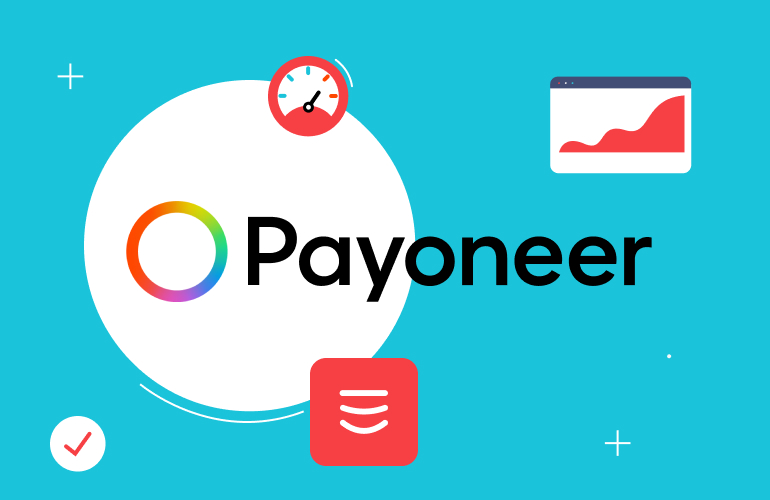About Payoneer
Payoneer enables over 4 million customers from more than 200 countries and territories to pay and get paid through their platform. Some of their customers include well-known corporations like Airbnb, Google, Walmart and Amazon.
Also – spoiler alert! – Payoneer is planning to go public within the next few months.
Available in 18 languages, Payoneer.com is built with WordPress and caters to their international audience, with more languages being added all the time. Payoneer.com is undoubtedly the most crucial part of their online presence – users can learn about Payoneer’s solutions, download eBooks, watch webinars, and of course register and become customers.
In addition, Payoneer’s blog also runs on WordPress, offering useful content – with articles about everything from compliance to reliable fulfillment – to their customers in 10 languages.
When Etay Sade joined Payoneer as the Web Team Lead, he knew there was a lot of optimization to be done for faster page load. Instead of going the usual route of using various performance tools and plugins, Etay remembered meeting Strattic at a WordPress conference and wanted to try it out.
“We were thinking of all the different ways we could tackle increasing the speed of our website,” Etay says, “and saw Strattic as a great opportunity.”
Before Strattic: downtime and instability
Payoneer’s marketing site was hosted with a well-known managed WordPress hosting provider that had unreliable uptime. This was a big issue because it reflected on Payoneer and made them look unreliable as well.
“With our previous hosting, we had some really serious downtime,” Etay explains. “The most recent incident was 8 hours of downtime and I was in touch with the hosting company the entire time but they couldn’t understand what was wrong. Luckily the pages were cached, but any new pages led to a 502 error. A few months before that, we had another 3 hours of downtime. I’m actually still waiting for an explanation.”
This type of downtime costs Payoneer financially, and also negatively impacts their brand and reputation. We run campaigns all the time and invest lots of money in advertising,” Etay shares, “so if the website is down, we obviously lose money. But mainly, this downtime was really detrimental for our reputation and was the final deal-breaker for us.”
Migrating our WordPress websites from our previous hosting to Strattic immediately increased our site speed significantly. This contributed to lowering our bounce rate, increasing our conversion rates, and also helped improve our SEO. I highly recommend Strattic.
Jonny Steel, VP Marketing, Payoneer
On Strattic: Delivering a better user experience with a modern tech stack
As a web expert, Etay saw it as his mission to take the Payoneer websites to the next level.
Etay says, “By running a modern Jamstack architecture, and serving static assets instead of PHP, you can greatly optimize the server load – sites will load faster and can scale much more easily. These benefits were really important to us, so we knew the next logical step for us was to go static.”
Etay found the modern tech stack he was looking for with Strattic’s unique hosting platform which generates a static version of a WordPress site, satisfying both their developers and marketers.
Payoneer sees faster server response times and higher conversion rates
Immediately after moving to Strattic, Payoneer reduced their server response rate by 43%, which means faster page load rendering for users.
A month into using Strattic, Payoneer’s signup conversion rates were up 2.73% which translates to thousands of new Payoneer users.
Scalability and reliability during high-traffic campaigns
Payoneer is often making headlines around the web and running massive ad campaigns. Provisioning servers ahead of time for these high-levels of traffic can be daunting and hard to get right.
Etay shares an experience from his previous company,“In my previous position we launched a campaign with Cristiano Ronaldo, a professional soccer player, and as soon as the campaign went live the entire website crashed. I wish Strattic had been around back then!” He continues, “Since then, it’s always been a top priority to make sure others on my team understand that server load and higher traffic can become problematic when you want to scale or run a campaign that will attract millions of visitors at the same time.“
With Strattic, every page on the site is a static file that gets distributed fully via a CDN. This means that as a site on Strattic gets an onslaught of traffic, it actually gets faster (this is the true magic of static assets on a CDN), so there is no longer a need to worry about reliability.
Added bonus: security and peace of mind
With Strattic, WordPress is removed from the equation and their visitors experience only a static replica of their site, so there’s nothing available to hack.
Etay says, “We always have security in mind – if anything happens to our site, it can really impact our reputation, so we typically take every possible security precaution. Now, on Strattic, security vulnerabilities common to WordPress sites become irrelevant.”
Strattic ensures resilience and speed, no matter what
With Strattic as the backbone of Payoneer’s website operations, Payoneer doesn’t need to worry about what will happen next with its WordPress site, regardless of what campaigns the team runs or how much traffic hits the site. So Payoneer can focus its energy on its successful digital payment platform, with a high-performance site at the center of its marketing efforts.



